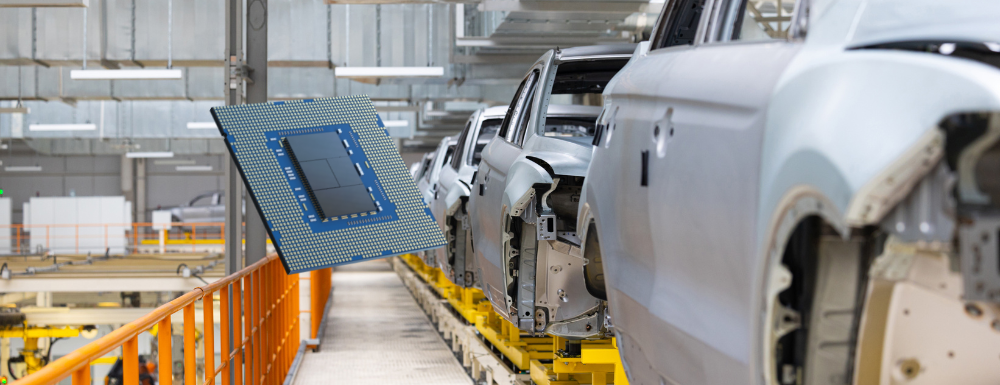The automotive industry has faced significant challenges due to the impact of the COVID-19 pandemic on semiconductor chip availability, causing widespread disruptions across the sector and the global economy. However, as we approach mid-2023, the situation has stabilized, and the auto industry has adjusted to a new normal. While the shortage of semiconductor chips that severely hampered vehicle production in 2021 and 2022 is still present to some extent, a recent analysis by S&P Global Mobility suggests that it has receded into the background, with a few exceptions.
The production momentum disruption caused by the chip shortage has pushed the target of achieving a 100-million-unit production year into the next decade, according to S&P Global Mobility. However, the chip shortage is improving, and the outlook is becoming more positive. Global sales and production, which experienced a setback, are now showing signs of improvement in 2023, with automakers adapting their production schedules and increasing their inventory.
Our current position as we reach the middle of 2023
In mid-2023, the situation transitioned from visible disruption at the automaker and plant level to a more manageable state. While the supply of semiconductors remains constrained, the auto industry has adapted and is now less likely to face significant disruptions. S&P Global Mobility estimates that the current semiconductor supply levels could support around 22 million units of global light-vehicle production per quarter.
However, the demand for semiconductors in vehicles is expected to rise due to the increasing complexity of infotainment, advanced safety, and autonomous systems. Phil Amsrud, a senior principal analyst at S&P Global Mobility, forecasts that the value of semiconductors installed in vehicles will rise from an average of $500 per car in 2020 to $1,400 per car by 2028.
The possibility of encountering disruptive changes in the future
Although the semiconductor crisis has largely been resolved, uncertainties and challenges remain in the chip supply situation. Certain chip types still face supply shortages, and the demand for semiconductors in autos continues to grow. Furthermore, there needs to be more capacity for mature node capacity, and geopolitical trade risks, such as trade tensions between the US and mainland China, could still affect semiconductor supply in the future.
Consolidating electronics in cars drives the demand for automotive semiconductors, with domain controllers and central computers replacing electronics control units. While this consolidation allows for more advanced system-on-chip (SoC) and discrete memory, it still needs to reduce the number of required semiconductors, especially for analog, discrete, and power components.
Automakers may need to reconsider their approach to manufacturing capacity after experiencing lower volumes and higher profits during the chip crisis. They may focus on managing inventory versus demand and supporting pricing power by allocating chips to high-margin vehicles with advanced features.
Setbacks
Despite the improvements in production and sales, it is unlikely that the auto industry will fully recover the production and sales lost between 2020 and 2022. The original forecast of exceeding 100 million units annually by 2022 has been pushed back to around 2030, indicating a setback of approximately a decade compared to pre-pandemic expectations. The semiconductor crisis was one of several external factors contributing to this setback.
In 2023, global light-vehicle sales are projected to reach 83.6 million units, with a forecast for another 93-million-unit year not expected until 2027. Similarly, global light-vehicle production is estimated to reach 85.6 million units this year, with a return to an 88-million-unit production year expected in 2024. However, production levels above 94 million units are not anticipated until 2028.
As we reach mid-2023, the semiconductor supply is no longer a limiting factor for vehicle production. Although there may still be occasional threats in certain parts of the supply chain, the industry is adding capacity in various regions. However, challenges remain, such as geopolitical risks and balancing mature and advanced process nodes. Electrification trends and autonomous driving will also impact the use of semiconductors in-vehicle architectures. While the auto industry has survived the semiconductor crisis caused by the pandemic, it must remain vigilant and adaptable as new challenges arise.

